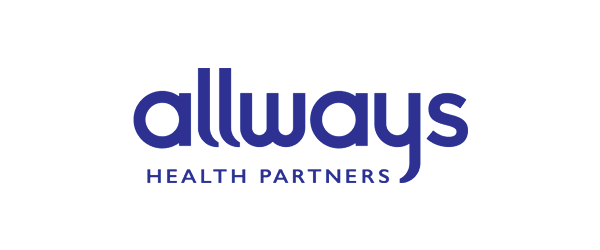Home | Oxycodone vs. Hydrocodone: A Comprehensive Guide to Pain Management Medications
Oxycodone vs. Hydrocodone: A Comprehensive Guide to Pain Management Medications
Learn more about oxycodone vs. hydrocodone and how to decide which medication is right for you here.
Oxycodone and hydrocodone are two most commonly prescribed opioids in pain management. But, in the field of pain management, there are many questions.
One particular question is oxycodone vs. hydrocodone—which one is better? Which one is safer?
Jump to Section
Oxycodone vs. Hydrocodone: Chemical Composition and Pharmacological Effects
Oxycodone and hydrocodone are both used in the management of moderate to severe pain.
Despite their similarities, there are important distinctions between them. In this analysis of oxycodone vs. hydrocodone, we’ll dissect these differences.
Some of these differences include:
Chemical Composition
The differences between oxycodone and hydrocodone start at their chemical structures.
Oxycodone (C18H21NO4) and hydrocodone (C18H21NO3) are semisynthetic opioids derived from thebaine.
But, oxycodone has an extra oxygen atom compared to hydrocodone. This, in turn, affects its pharmacological profile.
Pharmacological Effects
The oxycodone vs. hydrocodone comparison based on pharmacological effects includes assessing the potency of each.
When we discuss oxycodone vs. hydrocodone in terms of potency, oxycodone is often considered to be more potent than hydrocodone.
This means that lower doses of oxycodone achieve the same level of pain relief compared to hydrocodone.
Onset and Duration of Action
Oxycodone has a quicker onset of action compared to hydrocodone. But, both drugs have a similar duration of action. The duration lasts around 4-6 hours for immediate-release forms.
Efficacy
In the oxycodone vs. hydrocodone comparison, both are effective at reducing pain. But, their efficacy can depend on the individual and the specific type of pain.
We will talk more about the oxycodone vs. hydrocodone efficacy comparison in the following section.
Side Effects
The side effects of oxycodone and hydrocodone are similar. This is due to their similar mechanisms of action. These can include:
- Constipation
- Nausea and vomiting
- Dizziness
- Drowsiness
- Potential for dependence and addiction
Yet, some people may tolerate one drug better than the other.
Drug Interactions
Both oxycodone and hydrocodone have potential interactions with other medications. But, specific interactions may vary due to their metabolic pathways.
Formulations
Both oxycodone and hydrocodone are available in immediate-release and extended-release tablets. They’re also available as a component of combination products with other medications. In some countries, hydrocodone is available in combination forms.
The oxycodone vs. hydrocodone debate is complex. Both have similar pharmacological effects. Their differences in chemical composition also do not drastically change their overall performance.
Oxycodone vs. Hydrocodone: Effectiveness in Relieving Pain
Oxycodone and hydrocodone are both effective and similar in their clinical indications. But, they are not the same.
Below are some differences that may influence a physician’s choice between the two:
No Significant Difference Between the Two
Studies suggest that oxycodone and hydrocodone are equally effective for acute pain. A 2016 review comparing oxycodone vs. hydrocodone found no significant differences between the two in terms of pain relief.
That said, individual response to medication varies. Some people might find one more effective than the other.
Onset of Action
It’s important to note that oxycodone has a quicker onset of action. It takes effect within 10-15 minutes, compared to 20-30 minutes for hydrocodone. The duration of pain relief is similar for both, generally lasting about 4-6 hours.
Side Effects and Potential for Abuse
When analyzing oxycodone vs. hydrocodone, it’s also important to consider the side effects and potential for abuse.
This is because although both drugs are effective in relieving pain, they also have a high potential for misuse. This may lead to severe psychological or physical dependence. Oxycodone is often perceived as having a slightly higher abuse potential.
Oxycodone vs. Hydrocodone: Variations in the Potential Side Effects
Oxycodone and hydrocodone bind to opioid receptors in your brain to alter the perception and response to pain. This can provide significant pain relief, But, it can also lead to a number of potential side effects.
Below are some of these side effects.
Common Oxycodone Side Effects
Common side effects associated with oxycodone include:
- Drowsiness: Like many opioids, oxycodone can induce a state of drowsiness or sleepiness.
- Constipation: Opioids slow down the movements of the gut. This can lead to constipation.
- Nausea and Vomiting: These symptoms can occur often during the initial phase of treatment.
- Itching: Some people may experience skin itching or a rash as a result of an allergic reaction.
- Dizziness: Patients may feel lightheaded or dizzy, especially when standing up from a sitting or lying position.
- Dry mouth: Oxycodone may cause decreased saliva production, resulting in a dry mouth.
Rare Oxycodone Side Effects
In rare cases, oxycodone may lead to serious side effects, such as:
- Respiratory Depression: This can be a life-threatening condition where the rate of breathing decreases significantly.
- Dependence and Addiction: Oxycodone has a high potential for misuse and addiction.
- Overdose: Overuse can lead to a potentially fatal overdose.
Common Hydrocodone Side Effects
Hydrocodone shares many side effects with oxycodone, including:
- Drowsiness
- Constipation
- Nausea and vomiting
- Dizziness
- Itching
- Dry mouth
Distinct Hydrocodone Side Effects
But, hydrocodone may also have a few distinct side effects.
Anxiety or Restlessness
Some patients might experience heightened anxiety or restlessness.
Difficulty Urinating
Hydrocodone can cause urinary retention. The serious side effects of hydrocodone mirror those of oxycodone. They include respiratory depression, dependence and addiction, and risk of overdose.
Comparison Depends on the Individual
In the comparison of oxycodone vs. hydrocodone, some differences can occur depending on the individual’s body chemistry and tolerance.
It’s important to note that not everyone who uses these drugs will experience all the side effects. It often depends on the individual’s health and their response to the medication.
Oxycodone vs. Hydrocodone: Which is Best for Acute Pain Management?
Both oxycodone and hydrocodone are effective for acute pain management. Oxycodone may be used more often in instances of severe pain.
Hydrocodone, on the other hand, is often used for moderate to severe pain. Their similar efficacy makes the decision a matter of clinical judgment.
In acute pain management, safety is also an important consideration. In terms of safety, both drugs have similar side effect profiles. These may include drowsiness, dizziness, nausea, vomiting, and respiratory depression.
Request a Confidential Call
Take the First Step Toward Recovery.
If you or someone you know is struggling with addiction, we encourage you to request a confidential call. At Rockland Treatment Center, we understand the sensitivity and complexity of your situation and are here to offer you a space to explore treatment options, ask questions, and receive support from experienced professionals. Taking this first step can be challenging, but it’s a courageous and significant move towards a healthier, more fulfilling life.
"*" indicates required fields
Oxycodone vs. Hydrocodone: Potential for Addiction and Abuse
Addictive Potential
Oxycodone and hydrocodone both have a high potential for addiction. They act on the opioid receptors in the brain to increase feelings of pleasure and reduce pain.
But, research shows that oxycodone might have a slightly higher potential for addiction. This could be because it’s often perceived as more potent by users.
Potential for Misuse
Now let’s compare oxycodone vs. hydrocodone in terms of their potential for misuse. It’s worth noting that both drugs are both likely to be misused.
They are both classified as Schedule II drugs under the Controlled Substances Act. This shows that they have a high potential for addiction and misuse. Some data suggests that oxycodone is more likely to be abused because it’s available in more forms.
Physical Dependence and Withdrawal
With consistent use, both oxycodone and hydrocodone can lead to physical dependence. This means the body needs the drug to function.
If a dependent person stops taking either of these opioids, they may experience withdrawal symptoms. Oxycodone vs. hydrocodone withdrawal symptoms are similar.
They may include:
- Restlessness
- Muscle and bone pain
- Insomnia
- Diarrhea
- Vomiting
- Cold flashes
Overdose Risk
An overdose of either drug can slow or stop breathing, leading to death. Yet, the risk of overdose is not significantly different when comparing oxycodone vs. hydrocodone.
Tolerance
Use of both oxycodone and hydrocodone for long periods can lead to tolerance. This is where the body needs larger doses of the drug to achieve the same effect. It can lead to increased usage and the risk of addiction and abuse.
Effects on the Brain and Body
Both oxycodone and hydrocodone bind to opioid receptors in the brain and spinal cord. They also affect areas of the brain involved in reward. They can provide a sense of pleasure, which can contribute to their potential for abuse.
Oxycodone vs. Hydrocodone: Differences in Legal Restrictions
The following are differences between legal restrictions of oxycodone and hydrocodone.
Schedule Classification
The Drug Enforcement Administration (DEA) classifies these substances according to a “scheduling” system.
Both are categorized as Schedule II drugs. This indicates their high potential for abuse. Their use can also lead to severe psychological or physical dependence.
Formulation Restrictions
The legal restrictions on oxycodone and hydrocodone extend to their formulations. Oxycodone can get prescribed as a single-ingredient product. In contrast, hydrocodone gets prescribed in combination with other non-narcotic analgesics, like acetaminophen.
This difference, while seeming trivial, affects their use and the risk of complications. Overdose of hydrocodone products can lead to liver damage from acetaminophen.
State Laws
The federal laws apply uniformly across states. But, individual states may impose additional restrictions on these substances. Some states may have more stringent rules on prescribing, dispensing, and tracking.
Prescription Drug Monitoring Programs (PDMPs)
Both oxycodone and hydrocodone are monitored under PDMPs. These programs aim to identify and prevent drug misuse and diversion.
But, the scope and functionality of PDMPs may vary from state to state. This influences the accessibility and use of these medications.
Impact of Differences on Availability and Use
These regulations are aimed at striking a balance between therapeutic use and the prevention of misuse.
But, they can sometimes be excessive. Restrictions make it challenging for patients in genuine need of these medications to access them.
The differences in formulation also play a role. While the intent is to deter misuse, it can put patients at risk of other complications.

We accept most insurance plans
Oxycodone vs. Hydrocodone: Alternative Pain Management Options
Below are some alternatives to oxycodone and hydrocodone, each with its benefits and potential drawbacks.
Over-The-Counter (OTC) Pain Relievers
These include non-steroidal anti-inflammatory drugs (NSAIDs), such as ibuprofen (Advil, Motrin), and aspirin. Acetaminophen (Tylenol) is another OTC pain reliever.
Benefits
They are effective for mild to moderate pain, readily available, and non-addictive.
Drawbacks
They can cause gastrointestinal issues, including ulcers or bleeding with long-term use. They can also lead to liver damage (acetaminophen) when used too much.
Other Prescription Opioids
These include drugs like morphine, fentanyl, and tramadol.
Benefits
They are highly effective for treating severe pain.
Drawbacks
Similar to the oxycodone vs. hydrocodone debate, these opioids have a high risk of addiction and physical dependence.
Possible side effects include:
- Nausea
- Constipation
- Respiratory depression
Non-Opioid Prescription Pain Relievers
This includes drugs like gabapentin for neuropathic pain, and corticosteroids for inflammatory pain.
Benefits
They’re effective for specific types of pain and have a lower addiction potential than opioids.
Drawbacks
They have possible side effects, including:
- Dizziness
- Swelling
- Weight gain
Corticosteroids can cause osteoporosis and other severe side effects with long-term use.
Antidepressants and Anticonvulsants
These can help with chronic pain, such as tricyclic antidepressants and certain anticonvulsants.
Benefits
They can help manage certain types of chronic pain, especially nerve pain. They also have a lower addiction risk.
Drawbacks
They can have side effects such as weight gain, fatigue, and dry mouth.
Antidepressants can lead to mood changes or suicidal thoughts.
Physical Therapy and Occupational Therapy
These therapies can help improve physical functioning and manage pain.
Benefits
These non-drug approaches can improve strength, flexibility, and health.
Drawbacks
It requires a significant time commitment. Benefits may not be immediate, and it can cause increased pain or discomfort.
Complementary and Alternative Medicine (CAM)
This includes techniques like acupuncture, chiropractic treatment, and mind-body therapies such as meditation.
Benefits
It can offer pain relief for some individuals. It’s a non-drug approach that can improve well-being.
Drawbacks
Effectiveness varies; not all treatments are covered by insurance. There’s a potential for harm if not performed by qualified professionals.
Interventional Techniques
This includes injections, nerve blocks, and spinal cord stimulation.
Benefits
They can provide significant relief for certain types of pain.
Drawbacks
This option is invasive. It has a potential for side effects or complications. Not all individuals are good candidates for these procedures.
Oxycodone vs. Hydrocodone: Find Help at Rockland Recovery
Are you currently dealing with oxycodone or hydrocodone addiction? If you are and you’re looking for help, Rockland Recovery is here to help.
Get fast answers to your questions
Contact Rockland Recovery Treatment Centers
GET THE SUPPORT YOU NEED
Rockland Recovery is a leader in addiction treatment and mental health care. Our multidisciplinary team of top medical experts is committed to addressing the unique needs of each patient. Reach out to us anytime – we are available 24/7.
For additional information or to find addiction treatment and mental health services in your area, contact us directly or visit SAMSHA’s treatment locator. For immediate assistance, call or text 988 to reach the National Suicide & Crisis Lifeline or 855.732.4842 to speak to a Care Coordinator at Rockland Recovery.

Medically Reviewed by Kate Perfetti, LADC II
Check if your insurance covers the cost of addiction treatment






Search
Addiction Treatment Programs
Request a confidential call
"*" indicates required fields
Addiction Treatment Programs Massachusetts
Our comprehensive substance abuse treatment services are designed not just to treat the symptoms of addiction but to address the underlying causes, fostering deep, lasting healing and personal growth.